
The John Trumbull Birthplace, also known as the Governor Jonathan Trumbull House, is a historic house museum on the Lebanon Green in Lebanon, Connecticut, built in 1735 by Joseph Trumbull as a wedding present for his son Jonathan (1710–1785). The house was a center of political and military strategy during the American Revolutionary War, when Jonathan Trumbull was Governor of Connecticut. It was also the birthplace of John Trumbull (1756–1843), an artist known for his depictions of the war and its people. The house was designated a National Historic Landmark in 1965.
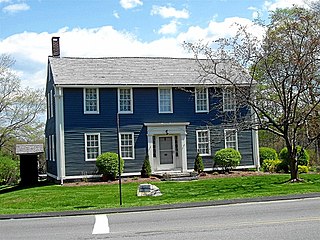
The William Williams House is a historic house in Lebanon, Connecticut at the junction of Connecticut Routes 87 and 207, a National Historic Landmark. It is significant as the residence of Founding Father William Williams (1731–1811), who was a delegate from Connecticut Colony to the Continental Congress and a signer of the Declaration of Independence. Williams lived here from 1755 until his death, and it is a well-preserved and little-altered colonial-era house.
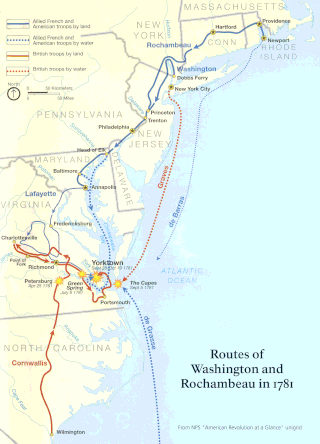
The Washington–Rochambeau Revolutionary Route is a 680-mile (1,090 km) series of roads used in 1781 by the Continental Army under the command of George Washington and the Expédition Particulière under the command of Jean-Baptiste de Rochambeau during their 14-week march from Newport, Rhode Island to Yorktown, Virginia. 4,000 French and 3,000 American soldiers began the march.

The John Tyler House is a historic house at 242–250 East Main Street in Branford, Connecticut. Built about 1710, it is one of the town's few surviving 18th-century residences, and a good example of late First Period architecture. The house was listed on the National Register of Historic Places in 1988.

The Dorrance Inn, also known as the Samuel Dorrance House, is a historic former inn at 748 Plainfield Pike in Sterling, Connecticut built about 1722. It is notable as a place that hosted officers of the French Army in 1781 and 1782, as it was along the march route taken by French commander Rochambeau's troops on their march to meet the Continental Army under General George Washington. Dorrance's Inn is one of a few places mentioned by name in multiple accounts written by French officers. The building was listed on the National Register of Historic Places in 2002 and is a contributing building in the Sterling Hill Historic District.

The Caleb Baldwin Tavern is a historic house at 32 Main Street in the Newtown Borough Historic District in Newtown, Connecticut, built around 1763. The two-and-a-half-story house is considered historically significant for its role in movement of French Army forces under General Rochambeau, as it housed some of the army's officers in June 1781 on their march to the Siege of Yorktown. It is also an example of traditional 18th-century New England architecture and retains some details from that time period. It was listed on the National Register of Historic Places on August 23, 2002.

The Daniel Basset House is a historic house at 1024 Monroe Turnpike in Monroe, Connecticut, built in 1775. It is significant for its association with events in the American Revolutionary War. It is documented to have hosted a ball for French officers of Lauzun's Legion on June 30, 1781; the legion had been encamped near the village center of Monroe. The house was listed on the National Register of Historic Places in 2002.

The John Glover House is a historic house at 53 Echo Valley Road in Newtown, Connecticut. Built about 1708 by an early town settler, it is a remarkably well-preserved example of 18th-century residential architecture, owned for generations by a locally prominent farming family. The house was listed on the National Register of Historic Places in 2001.

White's Tavern is a historic former tavern on United States Route 6 in Andover, Connecticut, built in 1773. It is a well-preserved example of colonial architecture, notable for hosting French Army officers in the American Revolutionary War. It is now a private residence and was listed on the National Register of Historic Places in 1991.
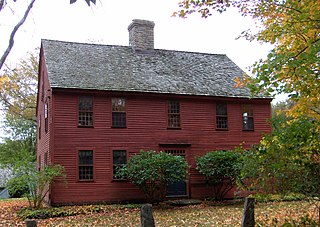
The Oliver White Tavern is a historic former tavern at 2 Brandy Street in Bolton, Connecticut. Built approximately 1750 as a residence, it is a good example of Georgian architecture. The tavern is historically significant because of its association with the march of Rochambeau's army during the American Revolutionary War, on their way to the Battle of Yorktown. The building, now a private residence, was listed on the National Register of Historic Places in 2002.
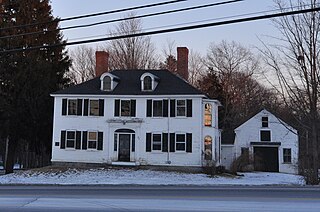
The Bartlett-Cushman House is a historic house at 82 Portsmouth Road in Stratham, New Hampshire. Built about 1810, it is one of the town's best examples of Federal-style architecture. It was listed on the National Register of Historic Places in 2014.

The Captain Philo Beardsley House is a historic house on Beardsley Road in Kent, Connecticut. Built about 1780, it is a well-preserved example of an 18th-century saltbox, with a remarkably well-preserved interior. It was listed on the National Register of Historic Places in 1979.
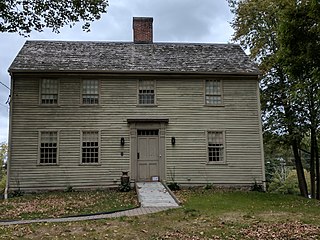
The David Sherman House is a historic house on Middle Quarter Road in Woodbury, Connecticut. Built about 1760, it is a well-preserved example of Colonial architecture. In 1781, David Sherman is reported to have hosted a ball for officers of the French Army of the Comte de Rochambeau during their march across Connecticut. The house was listed on the National Register of Historic Places in 2002.

The Gridley-Parson-Staples House is a historic house museum at 1554 Farmington Avenue in Farmington, Connecticut. Probably built about 1760, it is the oldest surviving house in northwestern Farmington, and a fine example of 18th century Georgian architecture. It is now home to the Farmington Historical Society, and was listed on the National Register of Historic Places in 1981.
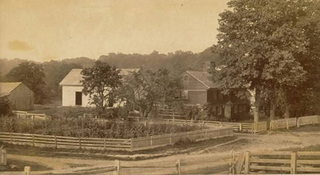
The John Hollister House is a historic house at 14 Tryon Street in the South Glastonbury village of Glastonbury, Connecticut. Built about 1675, it is the town's oldest surviving colonial structure, built by one of its early settlers. It was listed on the National Register of Historic Places in 1972.

The Aaron Bronson House is a historic house at 846 Southford Road in Southbury, Connecticut. Built in around the year 1785, it is a good local example of a Colonial-style Cape, noted for its particularly fine and well-preserved interior. It was listed on the National Register of Historic Places in 1993.

The Howd-Linsley House is a historic house at 1795 Middletown Avenue in the Northford area of North Branford, Connecticut. Built in 1705, it is a candidate as the oldest surviving building in the town, and a good example of period residential architecture. It was listed on the National Register of Historic Places in 1986.

The Rising Sun Tavern is a historic house and former public accommodation on Old Tavern Road in North Haven, Connecticut. Probably built around 1760, it is a well-preserved example of an 18th-century tavern house, serving in that role into the mid-19th century. Now a private residence, it was listed on the National Register of Historic Places in 1979.

The Shelley House is a historic house at 248 Boston Post Road in Madison, Connecticut. Probably built in the late 17th century and enlarged in the 18th century, this house's architecture clearly exhibits a typical growth pattern of colonial-era houses from a one-room stone ender to a saltbox house. The house was listed on the National Register of Historic Places in 1989.





















